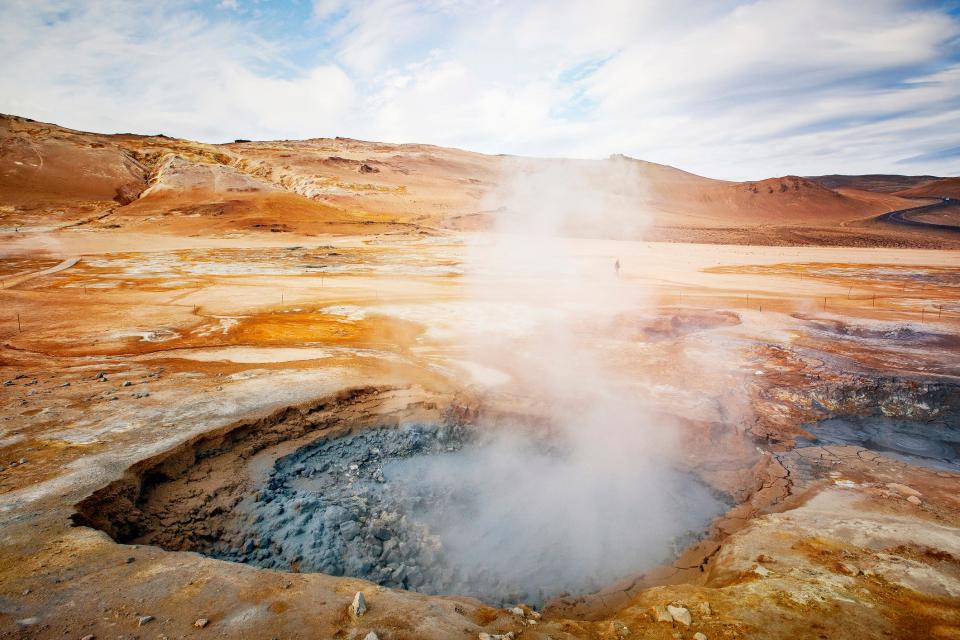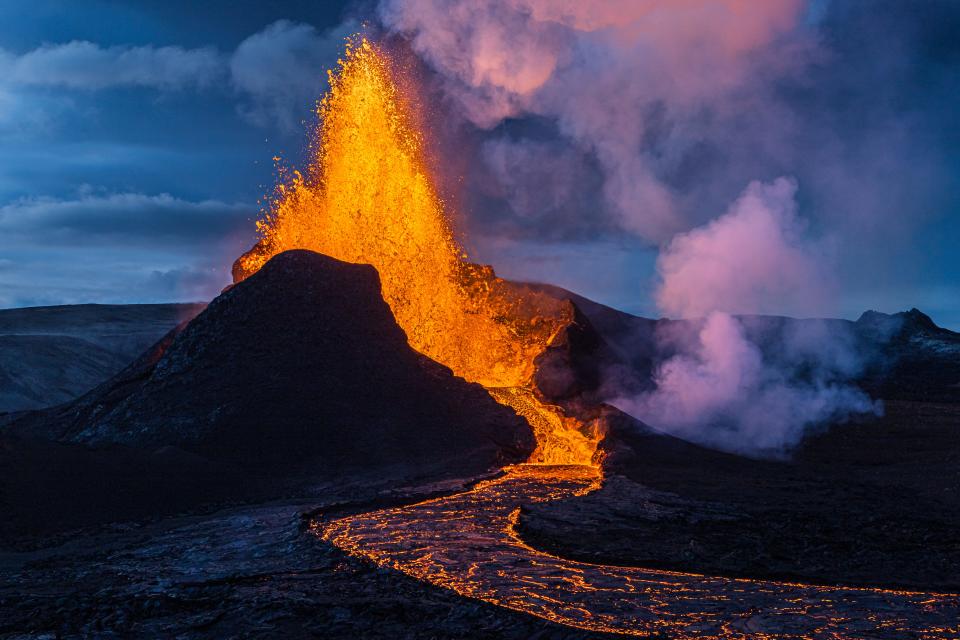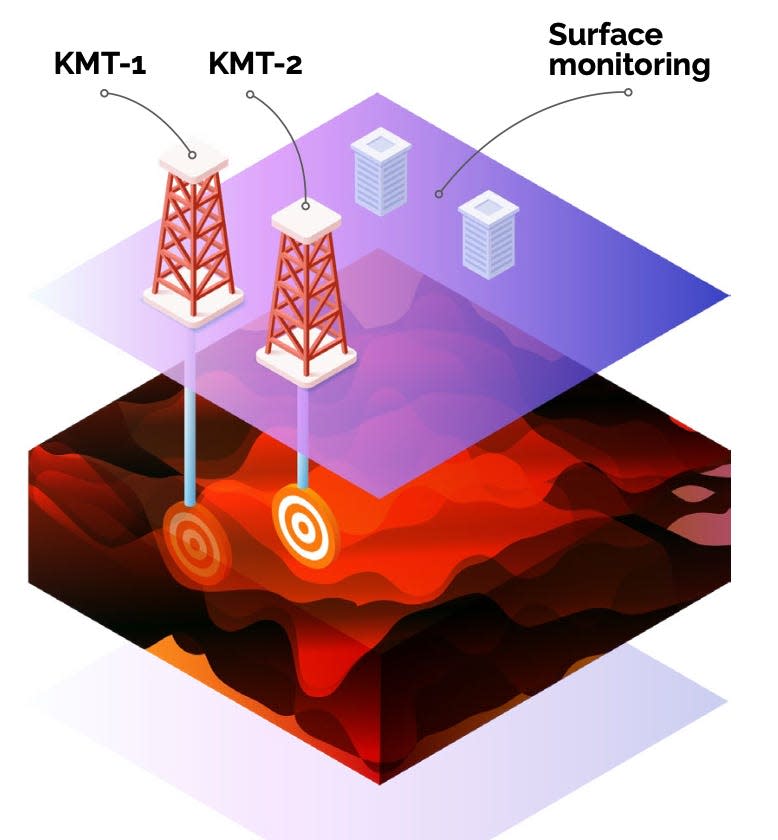-
Scientists in Iceland want to drill directly into the underground magma chamber.
-
The project may offer clues to how volcanoes work and produce geothermal energy.
-
The biggest hurdles are finding funding for the project and figuring out how to mine the magma.
Scientists in Iceland want to drill a hole into a magma chamber about a mile underground to produce unlimited energy.
The Krafla Magma Testbed (KMT) aims to create the world’s first research center above a magma chamber to monitor, sample and test molten rock in situ for the first time.
He hopes the center can offer unprecedented insight into how volcanoes work and open new avenues for unlimited geothermal energy.
“Magma on Earth is the last unexplored frontier,” KMT’s Hjalti Páll Ingólfsson told Business Insider.


An accidental discovery
Research into magma chambers is very important. These pools of molten rock in the Earth’s crust can form volcanoes if they find a way to reach the surface.
However, they are extremely difficult to locate with surface equipment and difficult to track before an explosion.
“We have no direct knowledge of what magma chambers look like, which is of course very important for understanding volcanoes,” Paolo Papale of Italy’s National Institute of Geophysics and Volcanology in Pisa, who has written on the subject, told New Scientist.
In 2009, scientists identified a potential candidate about 2.5 miles underground near Krafla in Northern Iceland. So they started drilling.
But about a mile into their descent, their drill jammed. It wasn’t until later when they came back with the volcanic glass shards that they realized what had happened. They had accidentally stuck their heads into a magma chamber.
According to New Scientist, scientists managed to make a few measurements, but eventually the wellhead became too hot to work.
They decided to pour cold water into the well to cool it, thus releasing black, billowy clouds that destroyed their equipment.
Now, 15 years later, the KMT wants to penetrate the chamber again – but this time, it wants to stay in place with the help of a few clever engineering tricks.
Reaching magma through a glassy rock ‘sock’
Krafla is an excellent site for such experiments. The magma there is old and flaccid, which means it’s unlikely to create an eruption or flow out of the well when you experiment on it, Ingólfsson said.
Jon Gluyas, professor of Earth sciences at Durham University, told BI that because it was so close to the volcano, small tremors triggered by scientists entering the chamber were unlikely to have an impact.
“If you’re in Iceland, you’re already in a highly active volcanic area. There’s nothing humans can do that will materially change that,” Gluyas said.
However, it is not possible for standard drilling rigs to survive in these conditions.
“The weather is very hot. This means that the materials you will use for drilling are not suitable for such temperatures,” Gluyas said.
One of the big challenges will be drilling directly into the magma while protecting the equipment, Ingólfsson said.
The solution is quite simple: freeze solid magma. The team aims to freeze the magma in front of the drill bit using water. This will create a “sock or pocket” of frozen glassy rock, similar to the obsidian you can find on Earth, according to Ingólfsson.


According to Ingólfsson, once large enough the drill bit can be removed, creating a small space inside the chamber to accommodate some monitoring equipment before the glass sock collapses.
According to New Scientist, this will allow scientists to get a precise reading of the magma chamber’s internal temperature, which has never been done before.
“Will it work? It’s definitely a challenge,” Ingólfsson said.
“We think we have the equipment and solutions, but unless we do them in a real environment it is very difficult to test them or get accurate results,” he said.
Another challenge will be keeping the rig afloat, as the KMT wants the boreholes to remain open. This is a very important point. The pipes covering the hole must be exposed to extremely high temperatures and acidic environments that can eat away at the metal.
“We’re trying to pick the right materials and figure out what’s the best way to design them to fit and survive,” Ingólfsson said.
We know very little about the interiors of volcanoes
If successful, the KMT could offer a range of new insights into volcanic activity, Gluyas said.
“From a scientific perspective, being able to sample an active magma chamber will give you a lot of information that is normally excruciatingly difficult to obtain,” said Gluyas, president of the Global Association for the Development of Geothermal Energy.
After all, most of what we know about volcanoes is what we see on the surface.


But when molten rock turns to lava, it loses most of the gas that pushed it to the surface, so we know little about the composition of the magma before it erupted.
“I sometimes insult some scientists when I say that everything we know about the interior of a volcano is a kind of guess—an educated guess, of course,” Ingólfsson said.
Direct sampling and monitoring of magma can provide crucial information about what it is made of and hopefully help us find ways to find its way underground. According to Gluyas, the glassy rock formed when magma freezes may also be evidence of a gold mine, as it may contain bubbles containing valuable magmatic gases.
“There will be a lot of basic science coming out of this and unexpected bonuses, but there is also a practical piece to this, which is a better understanding of how the Earth behaves and therefore better preparedness for potential natural disasters.” said. Gluyas.
KMT plans to drill a second hole dedicated to geothermal research.


Ingólfsson thinks one well in the magma chamber could be as productive as 10 other wells elsewhere.
Not only is it very hot there, but the magma is also changing the composition of the rock; KMT believes this could make geothermal energy more efficient.
“The source of geothermal is always magma, and getting closer to magma is obviously a higher productivity,” Ingólfsson said.
He said his research could inform new ways to harvest geothermal energy.
“The entire Atlantic ridge is offshore. If we combine what we learned at Krafla and what we know about offshore drilling, then you can envision, at least as a science fiction vision, that you could use it for abundant or infinite energy on Earth,” he said.


For Gluyas, the technology may be promising, but he questioned whether it is needed right now.
“If you go anywhere where there’s a well-developed volcanic area (Mexico, Kenya, Ethiopia, Italy), you’ll find geothermal energy is vastly underutilized. I’m not sure how much more efficient the systems would be if a magma chamber was drilled into it,” he said.
Short time to make a lot of money
KMT hopes to break ground on the first hole to the magma chamber in 2026. But there is still a long road ahead.
His biggest challenge is raising the money to build the research center and start drilling the holes. Ingólfsson estimates that KMT will need to raise more than $100 million from government agencies and industry partners.
“Sometimes we say that geology always sets the wrong poker table,” Ingólfsson said.
“In space exploration, you build telescopes that cost billions of dollars, like gamma rays. But in geology, two or 300 million is really expensive,” he said.
But Ingólfsson is confident.
“We think we have a very good chance of achieving something great,” he said.
Read the original article on Business Insider